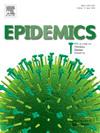流行病学模型的近似贝叶斯推断研究进展
IF 2.4
3区 医学
Q2 INFECTIOUS DISEASES
引用次数: 0
摘要
贝叶斯推理方法在传染病建模中非常有用,因为它们具有传播不确定性、管理稀疏数据、包含潜在结构和处理高维参数空间的能力。然而,在这些模式中,通过同化观测数据进行参数推断仍然具有挑战性。虽然渐近精确贝叶斯方法为准确的推断提供了理论上的保证,但对于实时爆发分析来说,它们可能在计算上要求很高,而且不切实际。本文综述了近似贝叶斯推理方法的最新进展,旨在平衡推理精度和可扩展性。我们专注于四个突出的家族:近似贝叶斯计算,贝叶斯合成似然,集成嵌套拉普拉斯近似和变分推理。对于每种方法,我们评估了其与流行病学应用的相关性,强调了提高计算效率和推理准确性的创新。我们还提供了在一系列建模场景中选择方法的实用指导。最后,我们确定混合精确近似推理是一个有前途的前沿,它结合了方法的严谨性和应对疫情所需的可扩展性。这篇综述为流行病学家提供了一个概念框架,以便在当代疾病建模的统计准确性和计算可行性之间进行权衡。本文章由计算机程序翻译,如有差异,请以英文原文为准。
Advances in approximate Bayesian inference for models in epidemiology
Bayesian inference methods are useful in infectious diseases modeling due to their capability to propagate uncertainty, manage sparse data, incorporate latent structures, and address high-dimensional parameter spaces. However, parameter inference through assimilation of observational data in these models remains challenging. While asymptotically exact Bayesian methods offer theoretical guarantees for accurate inference, they can be computationally demanding and impractical for real-time outbreak analysis. This review synthesizes recent advances in approximate Bayesian inference methods that aim to balance inferential accuracy with scalability. We focus on four prominent families: Approximate Bayesian Computation, Bayesian Synthetic Likelihood, Integrated Nested Laplace Approximation, and Variational Inference. For each method, we evaluate its relevance to epidemiological applications, emphasizing innovations that improve both computational efficiency and inference accuracy. We also offer practical guidance on method selection across a range of modeling scenarios. Finally, we identify hybrid exact approximate inference as a promising frontier that combines methodological rigor with the scalability needed for the response to outbreaks. This review provides epidemiologists with a conceptual framework to navigate the trade-off between statistical accuracy and computational feasibility in contemporary disease modeling.
求助全文
通过发布文献求助,成功后即可免费获取论文全文。
去求助
来源期刊

Epidemics
INFECTIOUS DISEASES-
CiteScore
6.00
自引率
7.90%
发文量
92
审稿时长
140 days
期刊介绍:
Epidemics publishes papers on infectious disease dynamics in the broadest sense. Its scope covers both within-host dynamics of infectious agents and dynamics at the population level, particularly the interaction between the two. Areas of emphasis include: spread, transmission, persistence, implications and population dynamics of infectious diseases; population and public health as well as policy aspects of control and prevention; dynamics at the individual level; interaction with the environment, ecology and evolution of infectious diseases, as well as population genetics of infectious agents.
 求助内容:
求助内容: 应助结果提醒方式:
应助结果提醒方式:


